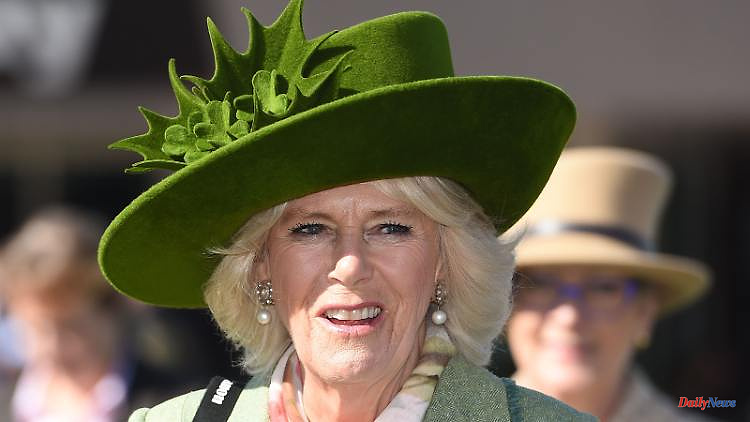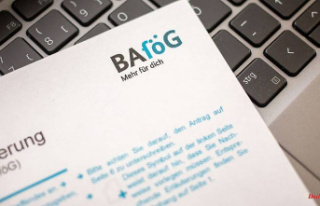It wasn't easy for her: Camilla, Queen Consort. She has long been extremely unpopular and a target of the media. The now 75-year-old, who has been with today's King Charles III since 2005, only finds out late. is married, esteemed by the Windsors and by the British people.
Queen Elizabeth II is dead, King Charles III. is the new head of state of Great Britain and Northern Ireland. In recent years, the increasing physical frailty of the long-term regent has made it necessary for family members to attend even more public appointments than before. The Queen was no longer able to travel abroad anyway and after the death of her husband Prince Philip, the Queen's health plummeted. Even before her death, the younger ones jumped in, kept important appointments and kept the Windsor "company" going. Including an important member of the royal family, who is already old in the traditional sense at 75: Her Majesty The Queen Consort Camilla, Duchess of Cornwall and Cambridge, divorced Parker-Bowles.
Camilla has been an integral part of the British public for some time now. She completes her appointments with the Windsors' signature routine, making the people she shakes hands with feel like they're there for them in the moment. And they thank her. Camilla finds the right tone - for example during a hospital visit after the terrorist attacks on London Bridge and Borough Market in early June 2017. "Britain has shown itself from its best side," she says during the visit. "Everyone sticks together." And those present applaud, Camilla is well received. She is a welcome member of the royal family.
It wasn't always like this: it took a long time for Camilla, born on July 17, 1947, to find her way into the hearts of the British. After all, as Charles' second wife, she is the successor to Princess Diana, who is still adored by the islanders and who died in a car accident in Paris in 1997. And Diana had, if you believe the British tabloid media, referred to her longtime rival as a "Rottweiler". The betrayed complained publicly that a marriage had been carried out in threes. She was not a child of sadness either. The Queen was suspicious of her eldest's affair with married Camilla Parker-Bowles, believing that Charles and Diana's doomed marriage could somehow be salvaged for the sake of her grandchildren William and Harry.
Born Camilla Rosemary Shand, Charles had met at a polo game in 1970. The young Prince of Wales was very fond of the noblewoman, who was a year her senior and descended from Stuart King Charles II (1630-1685). The love affair was short and intense - but at that time without a future. The British author Penny Junor also explains the reason in her recently published Camilla biography "The Duchess: The Untold Story": In the eyes of the Queen and Prince Philips, Camilla was "not aristocratic enough". In addition, her virginity had already been taken away.
It really broke Charles' heart when his Camilla decided to marry the cavalry officer Andrew Parker Bowles, who was eight years his senior. From the marriage with him there were two children - Thomas, whose godfather is the new king, as well as Laura. Charles cut ties for a few years and was the adored party prince. But in the late 1970s they got back in touch.
Because Charles and Camilla really loved each other. And because of their liaison, their already unhappy marriages later broke up. But before that, dramas took place - especially in the house of the heir to the throne. The then 20-year-old Diana is said to have been extremely jealous on their honeymoon in 1981 because her husband kept in touch with Camilla. As Junor claims to have found out, Diana is said to have organized a real telephone terror, which also included death threats.
The climax of the marital mudslinging came in 1993 when an intimate conversation between Charles and Camilla, dubbed a tampon call in the British media, became public. Now the Queen had had enough, especially since she had just come through an "annus horribilis" (three separations of her children and the great fire at Windsor Castle) in 1992. She agreed to Charles and Diana's divorce, which was finalized in 1996. Camilla ended her marriage to Andrew Parker Bowles in 1995. She withdrew from the public eye for a few years - a wise move considering the hype surrounding Diana after her accidental death and her own underground standing with the British.
However, friends and advisers of Prince Charles found a way to enable Camilla to appear in public again. They involved the media to arrange a joint appearance of the heir to the throne with his great love in 1999. It was a celebration that Charles and Camilla attended together. Then they had their picture taken together. A year later, Camilla met Queen Elizabeth II for the first time. In 2001, the heir to the throne and Camilla kissed in public for the first time. The court announced via the press that Princes William and Harry were on good terms with the woman at their father's side and were happy about Charles' luck. The ice was broken for the majority of Britons - Camilla became socially acceptable.
However, five years had to pass before the Queen agreed to a wedding. On April 9, 2005, the time had come: Prince Charles and Camilla were officially married in Windsor Town Hall. In order not to compete with the late Diana, Camilla renounced the title "Princess of Wales" and adopted the title "Duchess of Cornwall".
On her 70th anniversary of the throne, Elizabeth II made sure that Camilla could bear the title of Queen alongside Charles. "It is my sincere wish that when the time comes, Camilla will be known as the 'Queen Consort,'" the monarch wrote in a statement. It is actually the rule in Great Britain that the wives of kings are crowned as royal consorts. This was also the case with Elizabeth's mother and grandmother (Queen Elizabeth and Queen Mary). In the case of Camilla, who was blamed for the breakup of Charles' first marriage, however, the issue has long been contentious.
Camilla didn't care about the debate as she saw herself as part of the royal Windsor wheelwork. She got along well with the now deceased queen, because both women were not so dissimilar after all. Both Elizabeth and Camilla had or still have a soft spot for life in the country. Elizabeth liked her daughter-in-law's sense of duty and her unpretentious public appearances. So the Queen also did a women's program - such as in 2012 when she visited Fortum and Mason in London with Camilla and William's grandson Catherine.
Camilla does a lot for her public image and that's getting credit from Brits. She chairs the National Osteoporosis Society. Her mother and grandmother suffered from the disease, also known as osteoporosis. She also supports organizations that take care of victims of crime. In general, it's women's rights that Camilla fights for.
In contrast to Diana, Camilla acts more in the background. But that doesn't make your volunteer work any less effective. In any case, the members of the Windsor family have convinced the royal side entrant.












